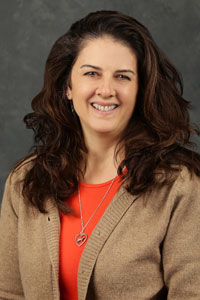The author and her husband, Duane, own and operate a 550-cow dairy in Cochranville, Pa.

When we first got married, registering calves meant that I had to sketch all the markings of the animal. It took a while to do each paper, but when the sketches matched up with the registration number on the paper and a tag in their ear, this was the unique identification needed to confirm their identity.
Drawing the markings was quite challenging on some of the calves. Remember Arlinda Chief? His calves were mostly white with tons of black dots. They were tough to draw and I may have missed a few spots.
It is always interesting to me how each animal’s markings are different. Like snowflakes, each animal is unique. There are times that they come out very close to identical twins, but typically, there are still a few hairs that designate a difference. At the least, I know that the animal still has a distinguished ID to tell them apart on the farm.
Eventually we started identifying the calves with a Polaroid camera. That was much easier than sketching, without a doubt, but it also came with challenges of making sure I was standing at the right angle to get the best view.
Technology has helped us get to a point that we do not sketch or need an instant camera. Now we use radio frequency identification. The RFID tags are put into the calves’ ears when they are born. The registration number is also on the RFID tag, and this serves as the animal’s unique and individual number of identification.
If we want to, we can take our identification one step further and conduct a genomic test on the animal. We find out a lot of useful information on the animal, and it defines differences between herdmates. It is interesting that embryo transfer calves are born with the same sire and dam but their genomics separate them in traits. We don’t genomic test all calves born on the farm, but there are many herds that see a benefit in that practice.
Animal ID is helpful for farmers. I am glad that the technology has improved over the years, making it easier and more accurate.
This ID system works as a double benefit. When they enter the milking herd, the RFID tag is also their ID as they walk into the parlor.
We like to put the tags in when they are calves because the ID stays with them for life. It seals their identification by giving them a unique ear tag number, an RFID number, and a Holstein registration number.
I know that some breeds take this a step further and also put an ink tattoo in the animal’s ear when they are registered. They might need this extra step as the markings on certain breeds are not as defined.
I remember the late Wally Lindskoog telling a story about a group of heifers that were stolen from his farm. He contacted stockyards, told them he was missing heifers, and if I remember correctly, he sent the stockyard copies of the registration papers so the animals would be recognized if they came through. Sure enough, months later, someone at the stockyards recognized this group of heifers in the sale ring. Wally had an incredible outlook, and his comment was simply put, “Only God would take my heifers away, let someone else feed them for several months, and then give them back to me.”
Proper ID not only works for our cattle. We also have an ID system for the people in this country. When we are born, we are given a social security number. Like registration numbers and RFIDs, our social security numbers are exclusively ours and no numbers are alike.
I recently found out that they are also a hot commodity. It first started when I began to receive automated calls that my social security number was breached. I was not about to trust an automated voice that is coming across the phone as potential spam and I ignored the call.
Turns out, the random person on the other end of the phone line was not spam as I had thought. My number was stolen, and someone has been attempting to collect unemployment under my name, birth date, and social security number.
Evidently, this is a thing right now, and this has happened to several people since the pandemic. Even so, you feel violated when your identity is compromised. The action necessary to freeze my credit, banking, and unemployment activity was time consuming and not on my to-do list, but it was critical to get ahead of the theft.
As this happened, I wondered if identification for people needs to be stepped up. It might be helpful to give us RFID tags or do genomic tests prior to opening accounts and getting credit cards, just to make sure the person is who they claim to be.









